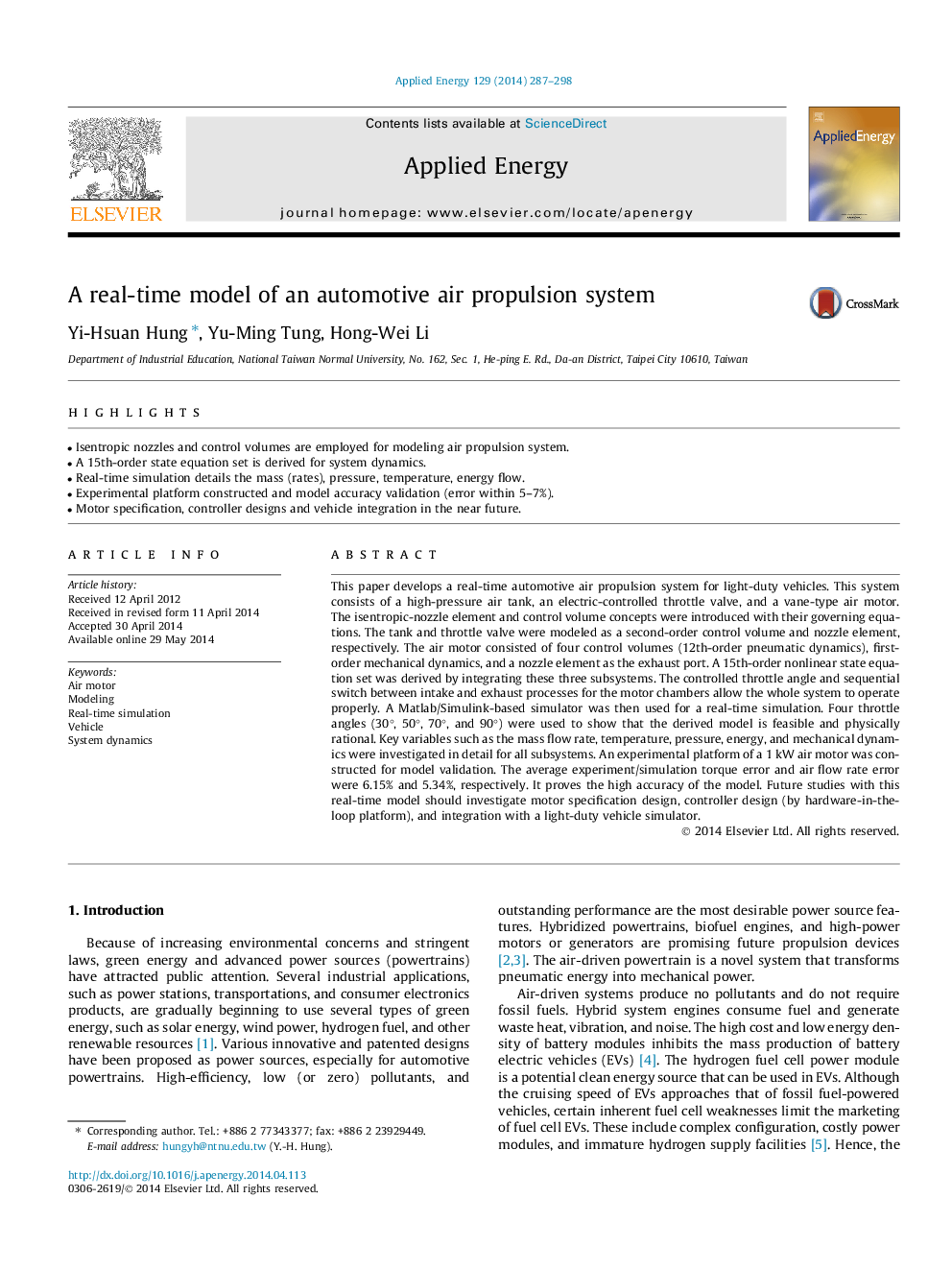| Article ID | Journal | Published Year | Pages | File Type |
|---|---|---|---|---|
| 242721 | Applied Energy | 2014 | 12 Pages |
•Isentropic nozzles and control volumes are employed for modeling air propulsion system.•A 15th-order state equation set is derived for system dynamics.•Real-time simulation details the mass (rates), pressure, temperature, energy flow.•Experimental platform constructed and model accuracy validation (error within 5–7%).•Motor specification, controller designs and vehicle integration in the near future.
This paper develops a real-time automotive air propulsion system for light-duty vehicles. This system consists of a high-pressure air tank, an electric-controlled throttle valve, and a vane-type air motor. The isentropic-nozzle element and control volume concepts were introduced with their governing equations. The tank and throttle valve were modeled as a second-order control volume and nozzle element, respectively. The air motor consisted of four control volumes (12th-order pneumatic dynamics), first-order mechanical dynamics, and a nozzle element as the exhaust port. A 15th-order nonlinear state equation set was derived by integrating these three subsystems. The controlled throttle angle and sequential switch between intake and exhaust processes for the motor chambers allow the whole system to operate properly. A Matlab/Simulink-based simulator was then used for a real-time simulation. Four throttle angles (30°, 50°, 70°, and 90°) were used to show that the derived model is feasible and physically rational. Key variables such as the mass flow rate, temperature, pressure, energy, and mechanical dynamics were investigated in detail for all subsystems. An experimental platform of a 1 kW air motor was constructed for model validation. The average experiment/simulation torque error and air flow rate error were 6.15% and 5.34%, respectively. It proves the high accuracy of the model. Future studies with this real-time model should investigate motor specification design, controller design (by hardware-in-the-loop platform), and integration with a light-duty vehicle simulator.
